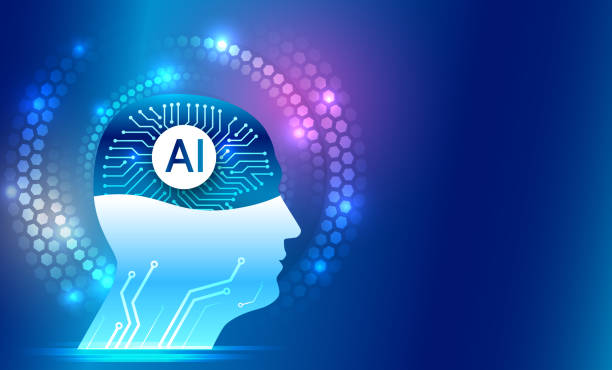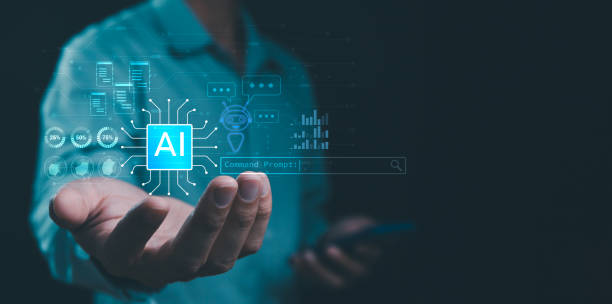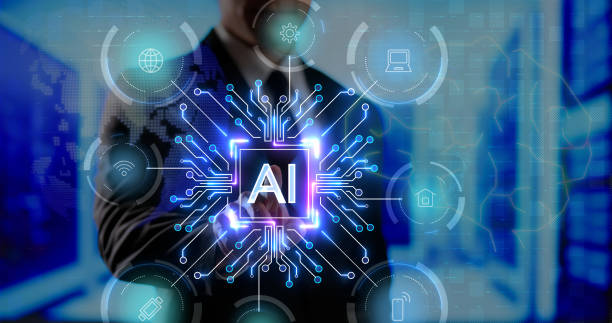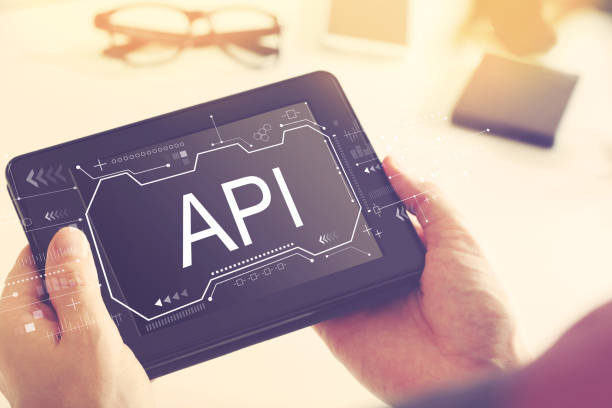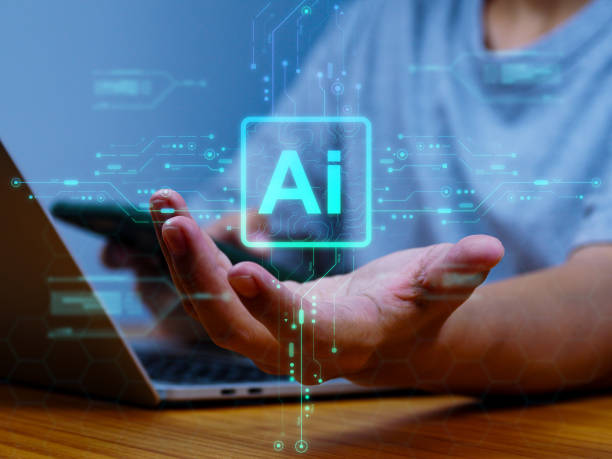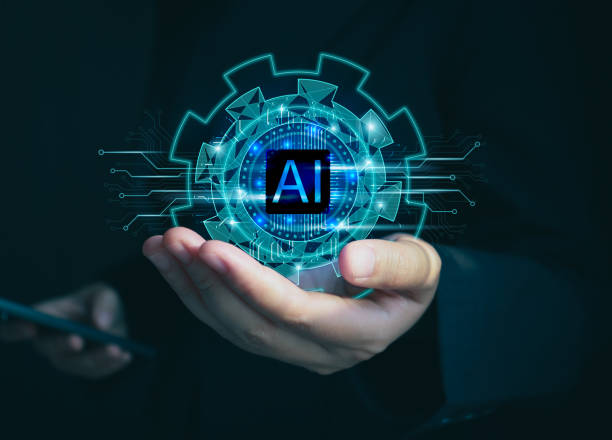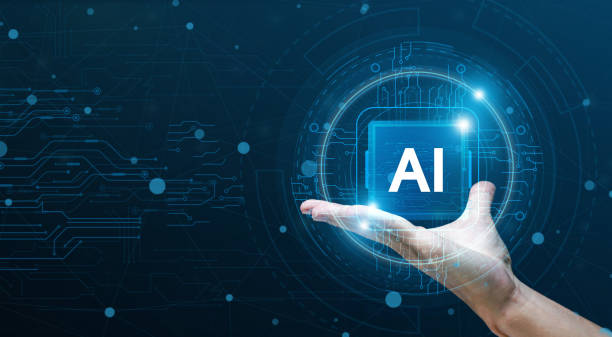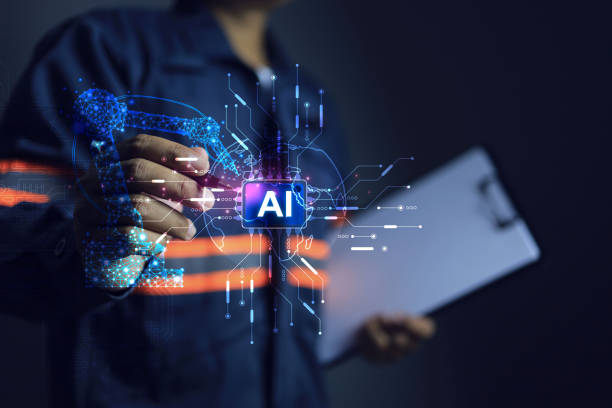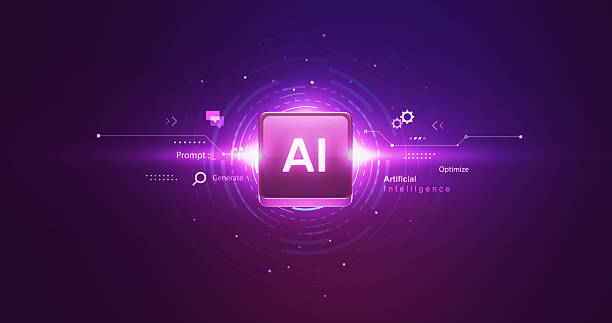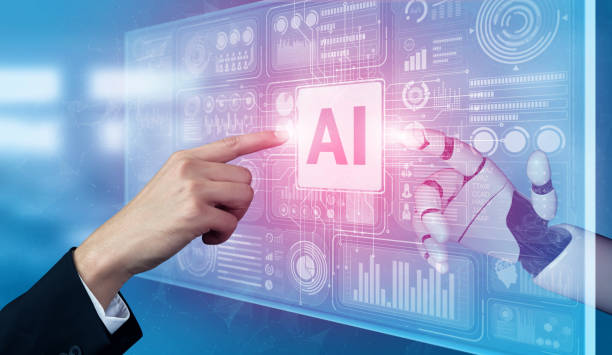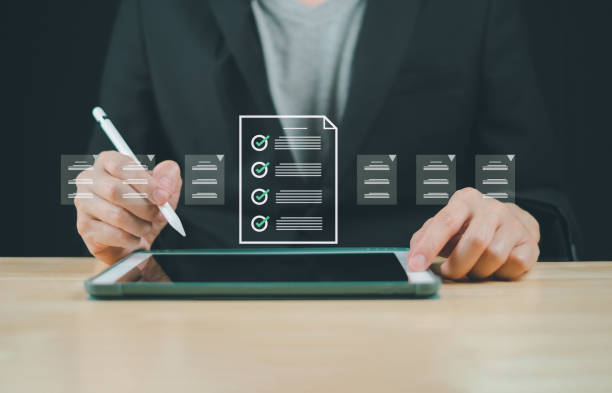What is an Artificial Intelligence Robot and How Does it Work?
#Artificial Intelligence Robot refers to a combination of #artificial intelligence and #robotics.
These robots are not only capable of performing physical tasks, but also use artificial intelligence algorithms to learn, reason, and make decisions.
In other words, an AI robot can improve its behavior and perform more complex tasks by analyzing data and interacting with its environment.
In short, an AI robot is a machine that has the ability to perceive, reason, learn, and solve problems.
These abilities allow the robot to operate in complex and unpredictable environments and perform various tasks with high efficiency.
Applications of AI robots include industry, medicine, customer service, and even entertainment.
The functioning of an AI robot involves several stages.
First, the robot collects data from the environment through its sensors (such as cameras, microphones, and touch sensors).
Then, this data is processed by artificial intelligence algorithms.
Using machine learning techniques, the algorithms identify patterns and relationships in the data and make decisions based on them.
Finally, the robot performs the appropriate action using its actuators (such as motors, arms, and output devices).
Did you know that your company’s website is the first point of contact for 75% of potential customers?
Your website is the face of your brand. With **Rasaweb’s** corporate website design services, create an online presence that earns customer trust.
✅ Create a professional and lasting image of your brand
✅ Attract target customers and increase online credibility
⚡ Get free consultation from **Rasaweb** experts!
Main Components of an Artificial Intelligence Robot
An AI robot consists of several main components, each of which plays an important role in the overall performance of the robot.
These components include:
- Sensors Sensors allow the robot to collect information from its surrounding environment.
There are different types of sensors, each designed to collect a specific type of information.
For example, cameras record images, microphones record sounds, and touch sensors collect information about contact with objects. - Processors Processors are the brain of the robot and are responsible for processing data, running algorithms, and making decisions.
The processors used in AI robots are usually very powerful so that they can process large amounts of data quickly. - Artificial Intelligence Algorithms Artificial intelligence algorithms are a set of instructions that allow the robot to learn, reason, and make decisions.
There are different types of artificial intelligence algorithms, each designed to solve a specific type of problem. - Actuators Actuators allow the robot to interact with its surrounding environment.
There are different types of actuators, each designed to perform a specific type of action.
For example, motors move the robot, arms move objects, and output devices display information to the user. - Power Source The power source provides the energy needed to operate the robot.
The power source can be a battery, a power outlet, or any other type of energy source.
The cooperation and interaction of these components enable the AI robot to perform complex tasks and operate in various environments.
The appropriate selection and design of each of these components depends on the type of application and the expected tasks of the robot.
Applications of Artificial Intelligence Robots in Various Industries
AI robots have a wide range of applications in various industries due to their unique capabilities.
These robots can perform repetitive, dangerous, and complex tasks with high accuracy and efficiency.
Below are some common applications of AI robots in various industries:
- Manufacturing Industry In the manufacturing industry, AI robots are used for tasks such as assembling parts, quality inspection, packaging, and transporting materials.
These robots can reduce costs and increase productivity by increasing speed and accuracy. - Medicine and Healthcare In the field of medicine, AI robots are used to perform precise surgeries, diagnose diseases, provide patient care, and assist in rehabilitation.
These robots can improve treatment outcomes by reducing human error and improving accuracy. - Customer Service AI robots in customer service are used to answer questions, provide technical support, and perform administrative tasks.
These robots can be available 24 hours a day, 7 days a week, and help customers anytime, anywhere. - Agriculture In agriculture, AI robots are used for tasks such as planting seeds, irrigating, harvesting crops, and controlling pests.
These robots can increase productivity and reduce costs by optimizing processes and reducing resource consumption. - Security and Surveillance AI robots are used in security and surveillance to perform tasks such as monitoring sensitive areas, identifying threats, and responding to incidents.
These robots can operate automatically and assist human forces in maintaining security.
Click here to preview your posts with PRO themes ››
With the advancement of technology, it is expected that the applications of AI robots will expand in various industries and play a more important role in our daily lives.
| Industry | Applications |
|---|---|
| Manufacturing | Assembly, Quality Inspection, Packaging |
| Medicine | Surgery, Diagnosis, Patient Care |
| Field | Description |
|---|---|
| Customer Service | Answering Questions, Technical Support |
| Agriculture | Planting Seeds, Irrigation, Harvesting |
Challenges and Limitations of Using Artificial Intelligence Robots
Despite the numerous advantages, the use of AI robots also comes with challenges and limitations.
These challenges can hinder the wider adoption and optimal use of this technology.
Below are some of the most important challenges and limitations:
- High Cost AI robots are usually very expensive, both in terms of purchase and maintenance and repair.
This high cost can be a barrier for many companies and organizations to use this technology. - Need for Expertise Designing, implementing, and maintaining AI robots requires high expertise.
The shortage of experts in this field can hinder the development and widespread use of this technology. - Ethical Issues The use of AI robots is associated with numerous ethical issues.
For example, robots may make decisions that conflict with human values.
Also, the use of robots can lead to job losses and increased social inequality. - Security AI robots can be vulnerable to cyberattacks.
Hackers can take control of robots and use them for malicious purposes. - Technical Limitations AI robots still have technical limitations in some areas.
For example, robots may not perform well in complex and unpredictable environments.
To overcome these challenges and limitations, we need to invest in research and development, train experts, develop ethical laws and regulations, and improve the security of AI robots.
With joint effort and cooperation, we can fully benefit from the advantages of this technology and prevent potential harms.
Are you bothered by losing customers due to the outdated appearance or slow speed of your online store? The Rasaweb expert team solves these problems with professional and high-selling online store design!
✅ Increase customer trust and brand credibility significantly
✅ Blazing fast speed and excellent user experience
Get a free consultation with Rasaweb right now ⚡
The Future of Artificial Intelligence Robots and Their Impact on Life
The future of AI robots is very bright and full of potential.
With the advancement of technology, robots are expected to become smarter, more capable, and more accessible.
These developments can have a profound impact on our lives.
Below are some of the most important future trends and potential impacts:
- Smarter Robots With the advancement of machine learning algorithms and the increase in processing power, robots will be able to perform more complex tasks and operate in unpredictable environments.
- Expanding Applications The applications of robots will expand in various industries.
Robots will play a more important role in areas such as medicine, education, transportation, and customer service. - Cheaper Robots With increased production and improved technology, the price of robots will decrease.
This will make robots accessible to more companies and individuals. - Better Interaction with Humans Robots will be able to interact with humans more naturally and effectively.
Robots can understand human language, recognize emotions, and provide appropriate responses. - Changes in the Job Market Widespread use of robots can lead to changes in the job market.
Some jobs may disappear, while new jobs will be created.
To prepare for the future of AI robots, we need to train new skills, develop appropriate laws and regulations, and create supportive policies.
With proper management, we can fully benefit from the advantages of this technology and prevent potential harms.
#AI robot is one of the technologies that affects daily life.
How to Choose the Right Artificial Intelligence Robot for Your Needs
Choosing the right #AI robot for your specific needs can be a complex process.
There are many factors to consider to ensure that the selected robot meets your goals and budget.
Here are a few key tips to help you in this process:
- Define Needs Before you start searching, define your needs carefully.
What tasks do you want the robot to perform? What features are important to you? What is your budget? - Research Explore the different types of AI robots available on the market.
Compare the features, advantages, and disadvantages of each.
Read user and expert reviews. - Evaluate Evaluate potential robots based on your needs.
Consider performance, reliability, ease of use, and cost. - Test If possible, test the robots before buying.
This will help you learn about their actual performance in real-world conditions. - Support Make sure you have adequate technical support and after-sales service.
A reliable supplier can help you troubleshoot and maintain the robot.
Click here to preview your posts with PRO themes ››
By following these tips, you can choose the right AI robot for your needs and benefit from this technology.
Also, keep in mind that the #AI robot is a long-term investment, so a smart choice can help you achieve your goals.
Overview of the Most Popular Artificial Intelligence Robots on the Market
The AI robot market is full of different options, each with its own features and capabilities.
Here are some of the most popular AI robots on the market:
- Boston Dynamics Spot A dog-like robot designed to perform tasks such as inspection, mapping, and surveillance.
Spot is very agile and reliable and can operate in harsh and rugged environments. - ABB YuMi A collaborative robot (cobot) designed to work alongside humans in manufacturing environments.
YuMi is very accurate and safe and can perform repetitive and delicate tasks with high precision. - Amazon Astro A home robot that can perform tasks such as monitoring the home, reminding tasks, and providing entertainment.
Astro is equipped with a camera, microphone, and speaker and can be controlled using voice commands. - iRobot Roomba A robotic vacuum cleaner that can automatically clean the floor of the house.
Roomba is equipped with various sensors and can detect obstacles and avoid collisions with them. - Softbank Robotics Pepper A humanoid robot designed to interact with humans in commercial environments.
Pepper can perform tasks such as welcoming customers, providing information, and providing entertainment.
These are just a few examples of popular AI robots on the market.
With the advancement of technology, new and more innovative robots are expected to enter the market and play a more important role in our daily lives.
Choosing the right robot depends on your needs and budget.
#AI Robot is progressing.
| Robot Name | Manufacturer |
|---|---|
| Spot | Boston Dynamics |
| YuMi | ABB |
| Robot Name | Application |
|---|---|
| Astro | Home |
| Roomba | Vacuum Cleaner |
Reviewing Legal and Regulatory Issues Related to Artificial Intelligence Robots
The widespread use of AI robots has created new legal and regulatory issues.
These issues include responsibility, privacy, security, and intellectual property.
Here are some of the most important legal and regulatory issues related to AI robots:
- Responsibility If an AI robot causes damage, who will be responsible? Is the manufacturer, owner, or user responsible? Existing laws in this area are still ambiguous and need clarification.
- Privacy AI robots typically collect a lot of information about users.
How can users’ privacy be protected against misuse of this information? - Security AI robots can be vulnerable to cyberattacks.
How can robots be protected from hackers and prevent them from being used for malicious purposes? - Intellectual Property Who owns the intellectual property of inventions and works of art produced by AI robots? Can robots be recognized as inventors or artists?
To solve these legal and regulatory issues, we need to develop new laws and regulations.
These laws should clearly define the responsibilities, rights, and limitations related to AI robots.
Also, appropriate security standards should be set for robots to prevent their misuse.
#AI robot needs law.
Are you unhappy with the low sales of your online store?
Rasaweb is your solution to have a professional and high-selling online store.
✅ Significant increase in sales and revenue
✅ Easy and enjoyable shopping experience for customers
⚡ Get a free consultation from Rasaweb right now!
Important Tips for Maintaining and Repairing Artificial Intelligence Robots
Regular maintenance and repair of AI robots is essential to ensure their proper functioning and increase their lifespan.
Here are a few important tips for maintaining and repairing AI robots:
- Periodic Inspection Inspect the robots periodically to identify any problems or defects.
The inspection includes checking mechanical, electronic, and software components. - Cleaning Clean the robots regularly to prevent the accumulation of dust and dirt.
Using the right cleaning materials for each type of part is important. - Replacing Parts Replace worn or damaged parts in a timely manner.
Using original and high-quality spare parts is recommended. - Software Update Update the robots’ software regularly to take advantage of the latest features and security patches.
- Training Train users on how to use the robots properly and avoid taking actions that may damage them.
By following these tips, you can keep your AI robots in good condition and ensure their optimal performance.
Also, contact maintenance and repair professionals if any serious problems occur.
#AI robot needs maintenance
Click here to preview your posts with PRO themes ››
Education and Learning in the Field of Artificial Intelligence Robots
If you are interested in learning about AI robots, various educational resources are available to you.
These resources include online courses, books, articles, and conferences.
Here are some of the best educational resources in this field:
- Online Courses Online educational platforms such as Coursera, edX, and Udacity offer various courses in the field of AI robots.
These courses are usually taught by leading university professors and help you learn basic and advanced concepts. - Books There are many books on AI robots that can help you learn this field.
Some of the best books include “Artificial Intelligence A Modern Approach” and “Robotics Vision and Control.” - Articles Scientific and research articles can help you understand the latest developments and trends in the field of AI robots.
You can search for articles in scientific databases such as IEEE Xplore and ACM Digital Library. - Conferences Attending conferences related to AI robots can help you get acquainted with experts in this field and learn about the latest advances.
Some of the most important conferences include ICRA and IROS.
By using these educational resources, you can acquire the knowledge and skills needed to work in the field of AI robots.
Also, you can become an expert in this field with practice and experience.
#AI Robot needs learning.
Frequently Asked Questions
| Question | Answer |
|---|---|
| What is an artificial intelligence robot? | An Artificial Intelligence (AI Robot) is a machine capable of understanding the environment, reasoning, learning, and making decisions to perform tasks independently. |
| What is the difference between regular robots and AI robots? | Regular robots perform repetitive tasks based on pre-programming, while AI robots can learn from experience, interact dynamically with the environment, and even behave in a way that resembles human intelligence. |
| What are the main applications of AI robots? | They are used in industries (manufacturing, assembly), medicine (surgery, diagnosis), services (customer support, home), exploration (space, underwater), and many other fields. |
| What technologies are used in the construction of AI robots? | Machine Learning, Computer Vision, Natural Language Processing, Deep Learning, and Robotics are among the key technologies. |
| Can AI robots have emotions? | Currently, robots do not have emotions in the human sense. They can identify and react to emotions, but they do not experience emotions themselves. |
| What are the main challenges in developing AI robots? | Safety, reliability, ethics, autonomy, adaptability to complex environments, and natural interaction with humans are important challenges. |
| How are AI robots trained? | They are usually trained using large amounts of data, machine learning algorithms, and deep learning to identify patterns and make decisions. |
| Examples of AI robots in everyday life? | Smart robotic vacuum cleaners, customer support chat robots, self-driving cars, and surgical robots in hospitals. |
| Are AI robots a threat to human jobs? | Some repetitive jobs may be automated, but at the same time, robots can increase productivity and create new jobs in the development, maintenance, and monitoring of these systems. |
| How is the future of AI robots predicted? | They are expected to become smarter, more autonomous, and capable of performing more complex tasks and interacting more closely with humans in different environments. |
and other services of Rasa Web Advertising Agency in the field of advertising
Smart Content Strategy: Professional optimization to attract customers using user experience customization.
Smart Content Strategy: A new service to increase website traffic through intelligent data analysis.
Smart Digital Branding: An exclusive service for sales growth based on marketing automation.
Smart UI/UX: Transform sales with the help of key page optimization.
Smart Direct Marketing: Designed for businesses looking to increase click-through rates through an SEO-driven content strategy.
and more than hundreds of other services in the field of internet advertising, advertising consulting, and organizational solutions
Internet Advertising | Advertising Strategy | Report Ad
Sources
What are smart robots and how do they work?
,How are chat bots residential with artificial intelligence programming?
,What is a smart robot?
,Review of ChatGPT4 Artificial Intelligence and its capabilities – Full review
? For the rise of your business in the digital world, Rasa Web Afarin Digital Marketing Agency, with expertise in SEO, online advertising and user-friendly website design, is with you to have a powerful and lasting presence.
📍 Tehran, Mirdamad Street, next to the Central Bank, Southern Kazerun Alley, Ramin Alley, No. 6
“`

